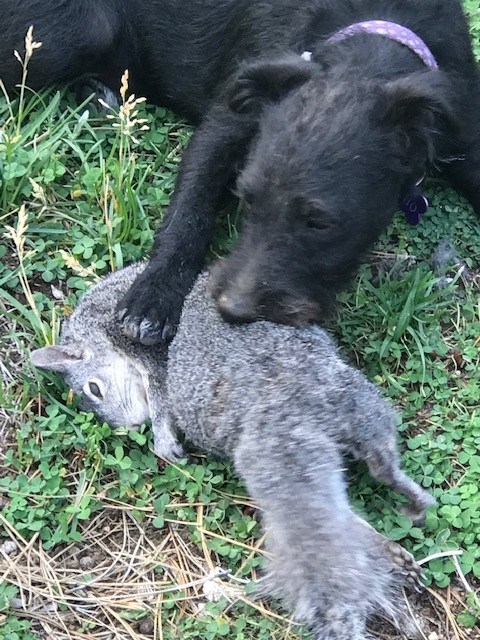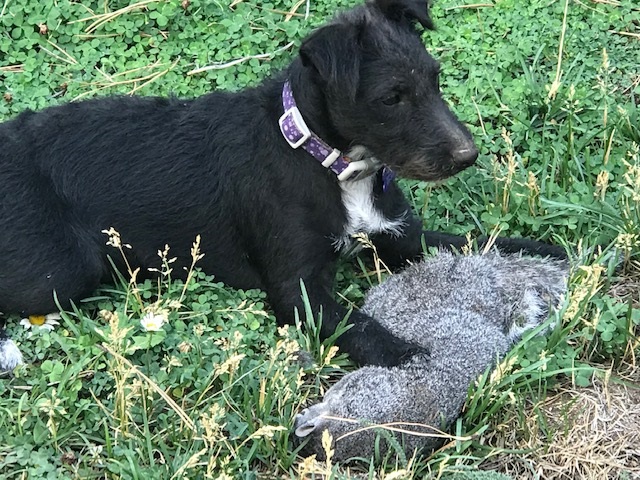Pedigree Project

Patterdale Terrier Pedigree Database
Fill in the name of the dog you want to do a pedigree search on, and then click the pedigree button. If the dog is present in the database, you will get as much information as we have entered. The pedigree display will be limited to 5 generations.
Corrections or new entries. If you receive a pedigree from your search and know that there are errors in the pedigree, please contact us with corrected information. Preferably you will be able to provide an image of the correct pedigree for us to use in correcting the database. We strive to have the correct information, but typos and errors from our sources do make for errors.
If you want to add another dog to our Patterdale only database, submit an image of the pedigree along with an image of the dog to our contact information. We will input the information into the database and let you know when it is done, Thanks in advance.
Intelligence in Domesticated Dogs

Importance of Pedigree Information
A dog pedigree is useful information for a dog breeder, or if one is interested in tracking the lineage of a dog they own or are interested in purchasing. Does it guarantee a great dog? Absolutely not! A pedigree only indicates what ancestors are included in the lineage. If you know about ancestors, there may be some indication of traits your dog may have inherited.
Patterdale Terriers are not an American Kennel Club (AKC) recognized breed and most of us who own and work them (read HUNT) want to keep it that way. We believe in breeding for working characteristics, not show!
If you are interested in show dogs, please select another breed and leave us with our hunting dogs. Patterdale Terriers are particularly noted for having a strong prey drive. Prey drive is a dog’s instinctual response to prey. The pursuit and capture of prey is called the predator sequence: eye, orient, stalk, chase, grab/bite, kill/bite, dissect and consume are the steps that make up this sequence. These 8 stages can exhibit in dog’s differently and the vast majority of dogs will not make it to the later steps. AKC terrier breeds usually do not exhibit the later steps, past the chase step, and are therefore not true to the original breeding goals for terriers. For example, "Ensuring your dog does not catch anything is also really important", says the American Kennel Club.
This advice from the AKC goes against everything successful Patterdale Terrier breeders are trying to achieve. The best Patterdale Terrier breeders strive to remain faithful to the original breed goal of breeding a dog with very strong prey drive. and dogs that eagerly complete all 8 stages in the prey drive sequence.
Evolution of Domesticated Dogs
The dog, Canis familiaris, is a direct descendant of the gray wolf, Canis lupus: In other words, dogs as we know them are domesticated wolves. In addition to changed behavior; domestic dogs are different in form; smaller with shorter muzzles and smaller teeth.
The evolution of domesticated dogs is not well documented, as the process has been going on long before recorded history. We get some clues about the evolution from artwork of primitive peoples around the world, where there were obvious images of dogs included in the primitive art, and more recently definitive evidence comes from DNA analysis. Numerous archaeometric approaches have been applied to document the interaction between wolves, dogs, and people in order to establish the time frame and geography of dog domestication. These studies have shown, first that dogs were the earliest animal domesticated, and the only species that entered into a domestic relationship with people during the Pleistocene
Molecular evidence, published in 1997, shows that dogs are descended from the gray wolf, and were domesticated about 130,000 years ago. How this domestication happened has been a matter of speculation. Until recently general thought was that dogs were wild until about 12,000 years ago. This means that wolves began to adapt to human society long before humans settled down and began practicing agriculture.
Archeological evidence for co-existence of dogs and humans, but not necessarily
domestication, comes from Upper Paleolithic sites in Europe. These hold
evidence for dog interaction with humans and include Goyrt Cave in Belgium, Chauvet cave in France, and Predmosti in the Czech Republic. European Mesolithic sites like Skateholm (5250–3700 BC) in Sweden have dog burials, proving the value of the furry beasts to hunter-gatherer settlements.
Danger Cave in Utah is the earliest known case of dog burial in the Americas,
at about 11,000 years ago, likely a descendant of Asian dogs. Continued
interbreeding with wolves, a characteristic found throughout the life
history of dogs everywhere, has apparently resulted in the hybrid black wolf found in the Americas. Black fur coloration is a dog characteristic, not originally found in wolves.
The earlier timing casts doubt on the long-held myth that humans
domesticated dogs to serve as guards or companions to assist them.
Dogs may have exploited a niche they discovered in early human society and got humans to take them in out of the cold. Darwin was wrong about dogs. He thought their remarkable diversity must reflect interbreeding with several types of wild dogs, but the DNA findings say differently. All modern dogs are descendants of wolves, though this domestication may have happened more than once, producing groups of dogs descended from two unique common ancestors, the European gray wolf and the Asian wolf.
But if they all share a common ancestor, why do toy poodles and Great Danes seem to have little in common? Years of selective breeding by humans has resulted in the artificial “evolution” of dogs into many different types.

Adopt the pace of Nature
Click edit button to change this text. Lorem ipsum dolor sit amet, consectetur adipiscing elit. Ut elit tellus, luctus nec ullamcorper mattis, pulvinar dapibus leo. Proin gravida nibh vel velit auctor aliquet. Aenean sollicitudin, lorem quis.
Luctus nec ullamcorper mattis, pulvinar dapibus leo. Proin gravida nibh vel velit auctor aliquet

Go Along With the Nature
Click edit button to change this text. Lorem ipsum dolor sit amet, consectetur adipiscing elit. Ut elit tellus, luctus nec ullamcorper mattis, pulvinar dapibus leo. Proin gravida nibh vel velit auctor aliquet. Aenean sollicitudin, lorem quis.
